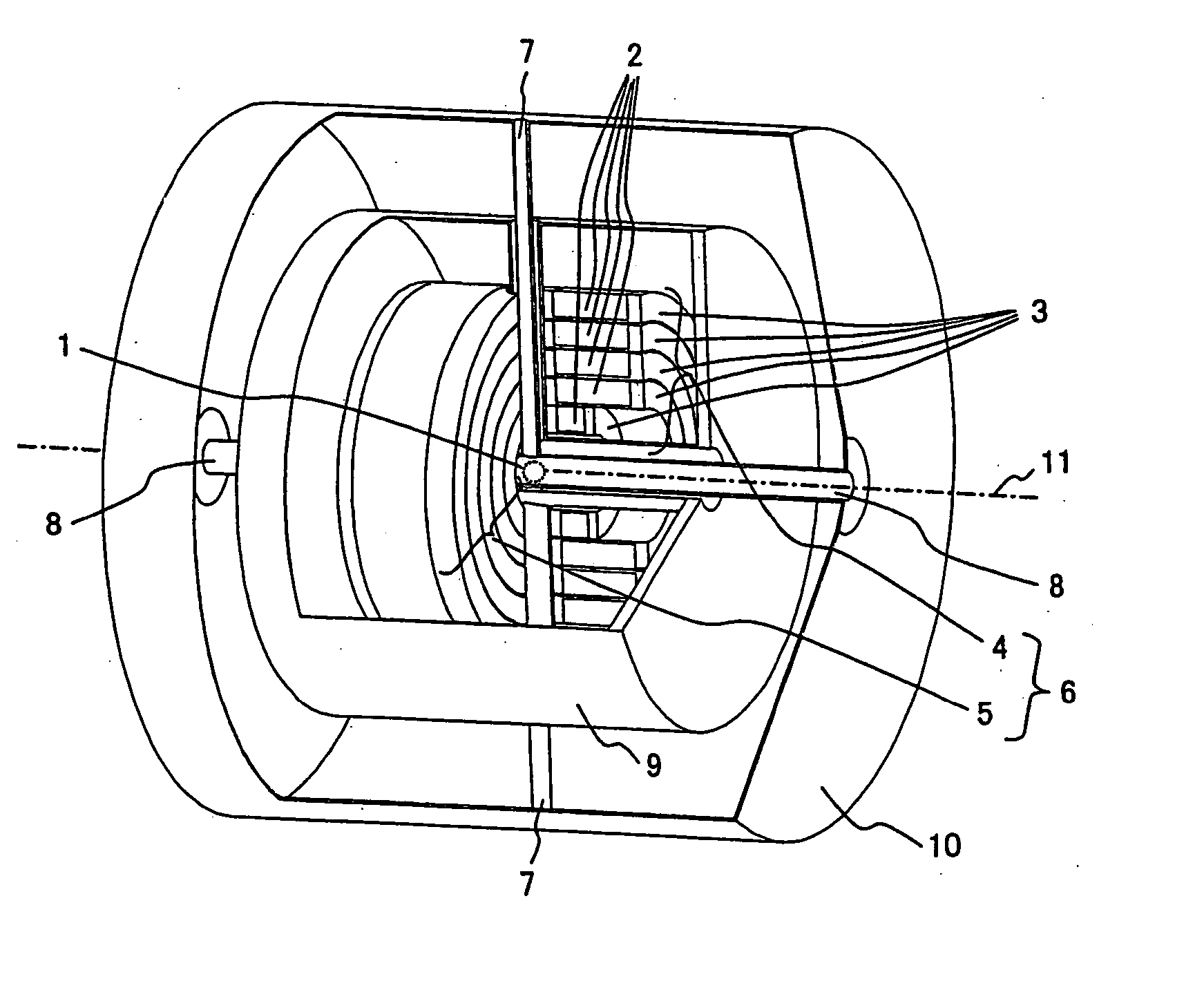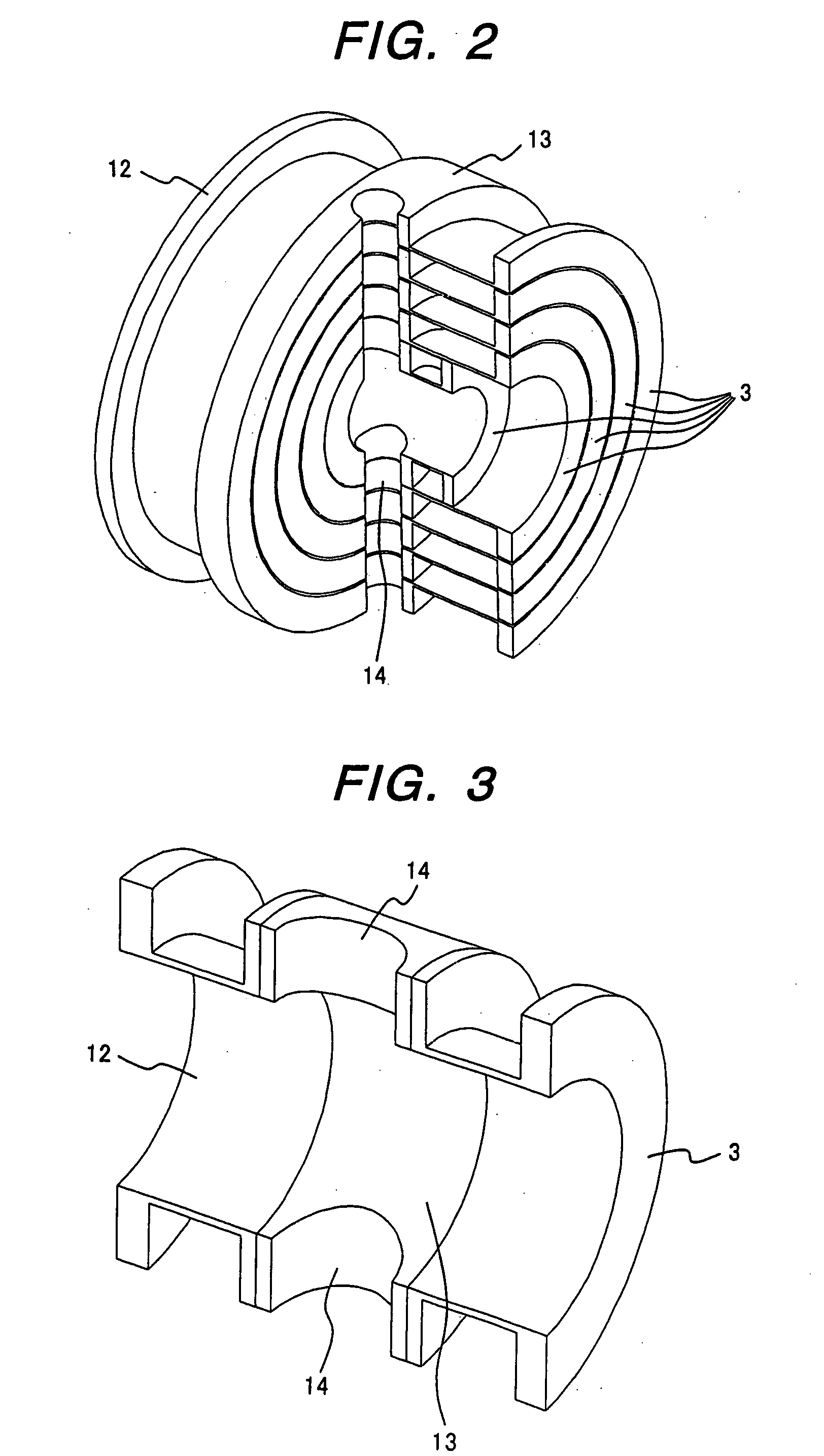Superconductivity magnet apparatus
a superconductivity magnet and magnet technology, applied in the direction of superconducting magnets/coils, magnetic bodies, instruments, etc., can solve the problem of axis-unsymmetrical error magnetic field, error magnetic field, and inability to place samples perpendicularly to the main magnetic field, so as to suppress the generation of axis-unsymmetrical magnetic field and uniform magnetic field
- Summary
- Abstract
- Description
- Claims
- Application Information
AI Technical Summary
Benefits of technology
Problems solved by technology
Method used
Image
Examples
first embodiment
[0023] A first embodiment of the invention is shown in FIG. 1. A superconductivity wire is wound around coaxial multiple bobbins 3 to form coaxial multiple layer superconductivity coils 2. The first superconductivity-coil block 4 (hereafter it's abbreviated as the first block 4) is configured by forming the superconductivity coils 2 into such a coaxial multi-layer structure. The second superconductivity-coil block 5 (hereafter it's abbreviated as the second block 5) is placed so as to face the first block 4. The configuration of the second block 5 is the same as that of the first block 4. The first block 4 and the second block 5 are arranged in the state of facing mutually so that the axes of magnetic fields generated by their respective coils coincide on the direction, and there is a gap between the blocks 4 and 5. The direction of the axis 11 of the magnetic field is also the direction of the axis of each coil. A split-type electromagnet 6 is configured by joining the first block ...
second embodiment
[0034] In the case of the first embodiment, the entire bobbin including the support structure body 13 is made of a material having a relative magnetic permeability in the range 1.000 to 1.002. However young's modulus of the titan alloy used in the first embodiment is smaller than that of stainless steel. And fabrication and welding processes to titan are not easy. The high manganese steel used the first embodiment is difficult to obtain and to fabricate easily.
[0035] Considering above-mentioned matter, in the case of the second embodiment, the bobbins 3 and 12 and the support structure body 13 are made of different materials, and they are formed into a single assembly as shown in FIG. 3. To put it concretely, a stainless steel, i. e., SUS316 or SUS316L is used as material for the bobbins 3 and 12 requiring high durability and large Young's modulus. On the other hand, as material for the support structure body 13 including a cutout such as the through (penetrating) hole 14 of the fi...
PUM
| Property | Measurement | Unit |
|---|---|---|
| magnetic field | aaaaa | aaaaa |
| radius | aaaaa | aaaaa |
| radius | aaaaa | aaaaa |
Abstract
Description
Claims
Application Information
 Login to View More
Login to View More - R&D
- Intellectual Property
- Life Sciences
- Materials
- Tech Scout
- Unparalleled Data Quality
- Higher Quality Content
- 60% Fewer Hallucinations
Browse by: Latest US Patents, China's latest patents, Technical Efficacy Thesaurus, Application Domain, Technology Topic, Popular Technical Reports.
© 2025 PatSnap. All rights reserved.Legal|Privacy policy|Modern Slavery Act Transparency Statement|Sitemap|About US| Contact US: help@patsnap.com



